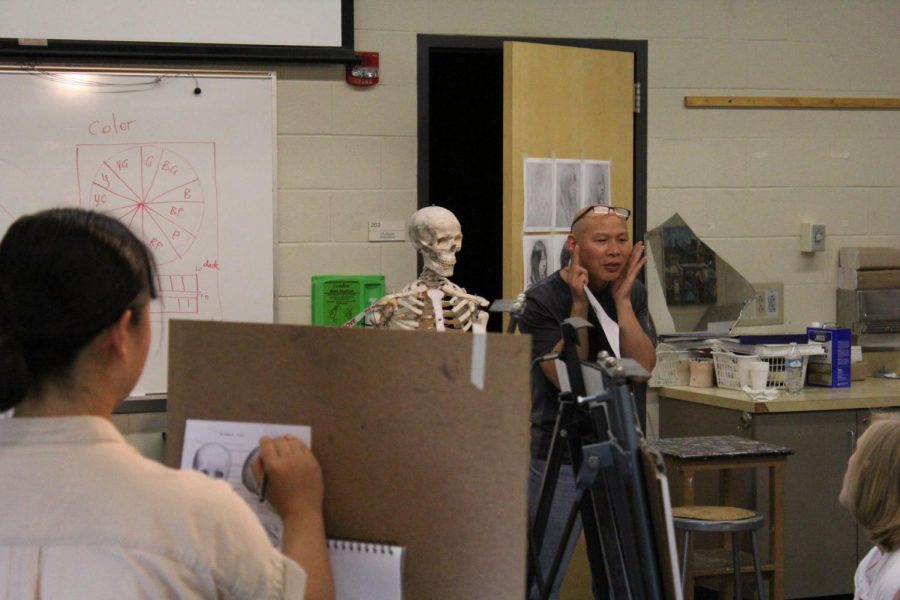About a Major: BFA drawing and painting
August 27, 2019
The Art building on Washburn’s campus is home to many art majors and concentrations within those majors, Bachelor of Fine Arts with drawing and painting being one of them.
Senior drawing and painting major Kyra Miller said, “I want to be an illustrator for books or magazines or textbooks. I really would like to do children’s books, but I’m open to all kinds of books that need some kind of graphic or story told through illustration.”
The Bachelor of Fine Arts has requirements including 86 hours of art credits, and at least two entries into the juried student exhibition during their academic career.
Drawing and painting professor Ye Wang speaks on some of the challenges that come from being an art major and the qualities of a good student.
“[Developing] the concept of your work, then executing it in a good way,” said Wang. “Then you also have the technical part, your skills. If you can perfectly combine these two, then you would be the best. A lot of people would either be good at this part or that part. To be good at both will take a lot of talent and training, but we have a lot of talented students.”
Wang has been able to see both extremes of these two ideas of creativity and skill. He observed that when creativity is lacking, the art is lacking in uniqueness. When skill is lacking, even a good concept can be executed poorly.
“We just think imagination is very important in the solution of some problems,” said Wang. “And not only in art, but in life too; because in life, if you don’t use a creative part, the imagination to do it, a lot of times you get stuck. So after you have learned art, this can be applied to problem solving in daily life too. If you don’t dare to imagine a lot of new things, ideas cannot come out.”
In addition to the constant need for new ideas, art majors are also asked to double their time spent in the classroom by spending the same amount of time working outside of class.
“Studio class usually lasts almost three hours and is held twice a week,” says Miller. “So we’ll do the work in class, but then he [Wang] wants us to come into the studio outside of class. It’s on our own time, and it’s to actually take time out of our day to practice stuff, get better…because two class periods a week is not enough to get to the level expected of us.”
Amid rigorous expectations and a call to creativity is a community seeking to learn from and support one another.
“Get yourself out there and do stuff outside of class. Go to gallery openings and first friday art walks. Talk with people and other students. It’s easy to want to be on your own and it’s scary to talk to other artists, but participating and getting out there in the community has been the best thing for me as an artist.” said Miller.
Edited by Adam White, Jessica Galvin



